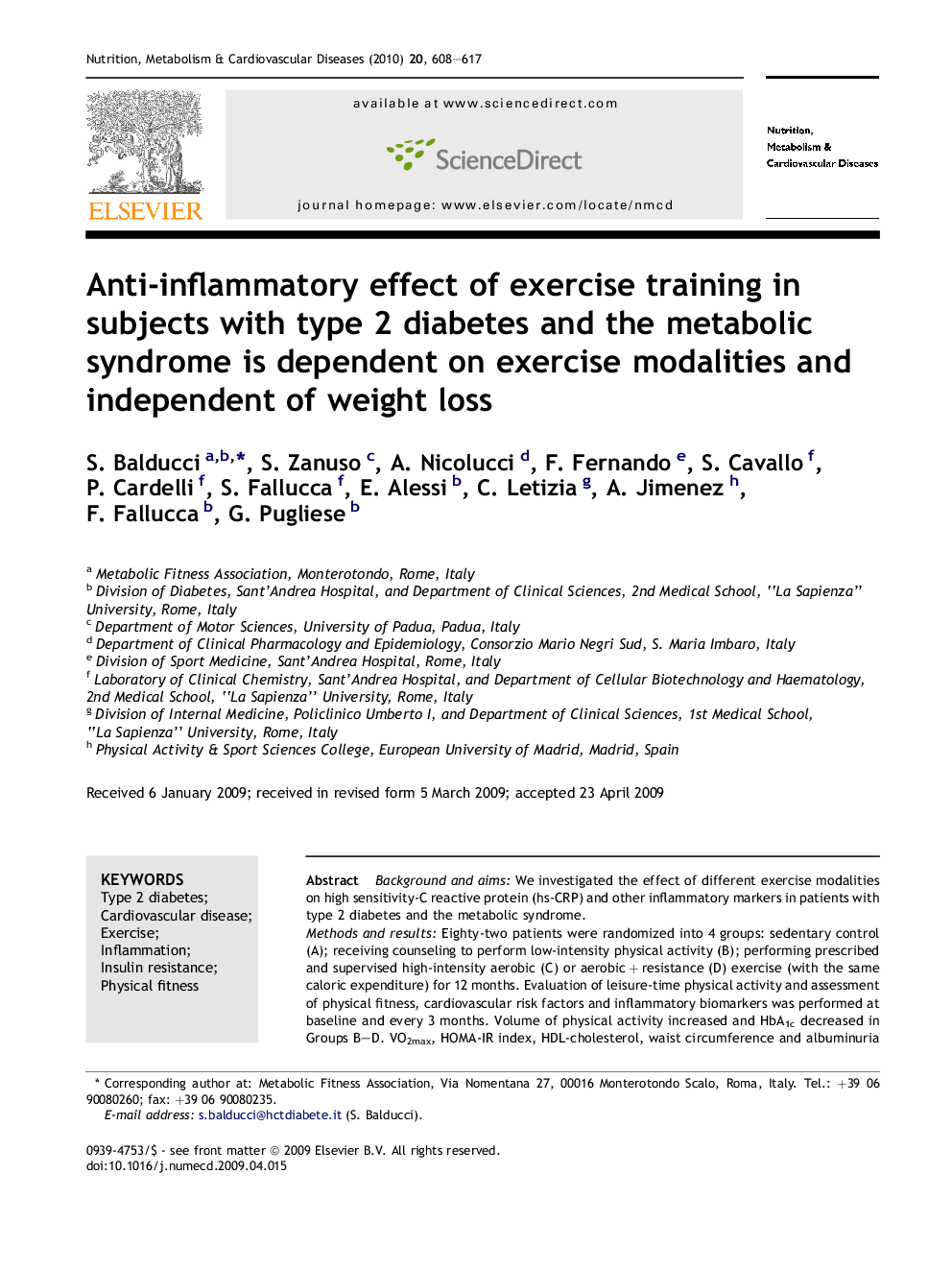| Article ID | Journal | Published Year | Pages | File Type |
|---|---|---|---|---|
| 3002621 | Nutrition, Metabolism and Cardiovascular Diseases | 2010 | 10 Pages |
Background and aimsWe investigated the effect of different exercise modalities on high sensitivity-C reactive protein (hs-CRP) and other inflammatory markers in patients with type 2 diabetes and the metabolic syndrome.Methods and resultsEighty-two patients were randomized into 4 groups: sedentary control (A); receiving counseling to perform low-intensity physical activity (B); performing prescribed and supervised high-intensity aerobic (C) or aerobic + resistance (D) exercise (with the same caloric expenditure) for 12 months. Evaluation of leisure-time physical activity and assessment of physical fitness, cardiovascular risk factors and inflammatory biomarkers was performed at baseline and every 3 months. Volume of physical activity increased and HbA1c decreased in Groups B–D. VO2max, HOMA-IR index, HDL-cholesterol, waist circumference and albuminuria improved in Groups C and D, whereas strength and flexibility improved only in Group D. Levels of hs-CRP decreased in all three exercising groups, but the reduction was significant only in Groups C and D, and particularly in Group D. Changes in VO2max and the exercise modalities were strong predictors of hs-CRP reduction, independent of body weight. Leptin, resistin and interleukin-6 decreased, whereas adiponectin increased in Groups C and D. Interleukin-1β, tumor necrosis factor-α and interferon-γ decreased, whereas anti-inflammatory interleukin-4 and 10 increased only in Group D.ConclusionPhysical exercise in type 2 diabetic patients with the metabolic syndrome is associated with a significant reduction of hs-CRP and other inflammatory and insulin resistance biomarkers, independent of weight loss. Long-term high-intensity (preferably mixed) training, in addition to daytime physical activity, is required to obtain a significant anti-inflammatory effect.
